
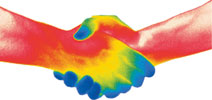
This is one of the first questions asked by a potential buyer of this technology. It is a reasonable question to ask, but you can see the moon, ±250 000 km from earth, but it does not mean that you can detect, recognise or identify an object or person at that distance.
The 'range', as called in the thermal imaging industry, you can see with a thermal camera is determined by sophisticated modelling. Some of the variables to consider are the type of thermal imager used (cooled or un-cooled), focal length of the lens, atmospheric conditions the size of the object, do you want to detect, recognise or identify the object.
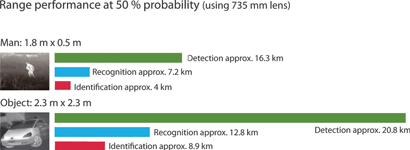
To define what it means to 'see' an object, the Johnson's criteria can be used. John Johnson was a night vision and electronic sensors directorate scientist. He developed criteria that relate to the effective range of infrared cameras. This was mainly developed and used for the military, but are widely used in the commercial market to characterise thermal imaging systems. There are three main distinctions between degrees of 'seeing' a target: detection, recognition and identification.
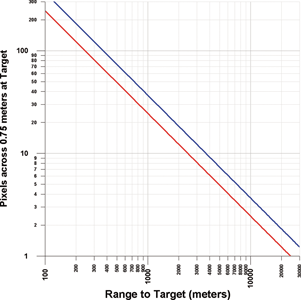
Nomograph:
Cooled detector 640 x 480 with 15 micron pitch.
Pixels across 0,75 m critical dimension of a man-sized target versus range.
Red line – 490 mm lens Blue line – 735 mm lens.
Detection
In order to detect if an object is present or not, its critical dimension needs to be covered by 1,5 or more pixels. The unit of system resolution originally used in Johnson's definition, 1,5 pixels in a staring array is equivalent to 0,75 'cycles'.
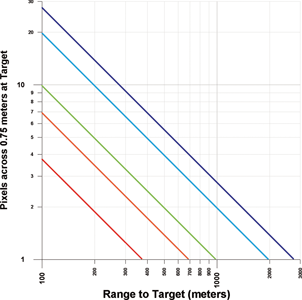
Nomograph:
Uncooled 320 x 240 detector with 38 micron pitch
Pixels across 0,75 m critical dimension of man-sized target versus range.
Purple – 140 mm lens.
Blue – 100 mm lens.
Green – 50 mm lens.
Orange – 35 mm lens.
Red – 19 mm lens.
Recognition
The definition of recognition is seen as what type of object it is. This means to make a clear distinction between a person or car or truck or any other object. In order to recognise an object it needs to be subtended by at least 6 pixels across its critical dimension.

Identification
This term is normally used in the military to distinguish between friend or foe. In order to do this the critical dimension of the target in question needs to be subtended by at least 12 pixels.
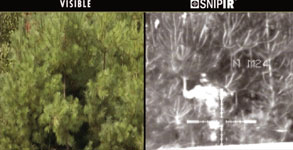
In summary, there is no easy answer to the question, 'How far can we see with a thermal imaging camera?' It depends on a large number of environmental conditions, system variables, nature of the target, the background and atmospheric conditions. It also depends on the chosen camera and lens.
Acknowledgement to Flir - Technical Notes.
For more information contact Timeless Technologies, +27 (0)861 846 383, [email protected], www.timetech.co.za

© Technews Publishing (Pty) Ltd. | All Rights Reserved.